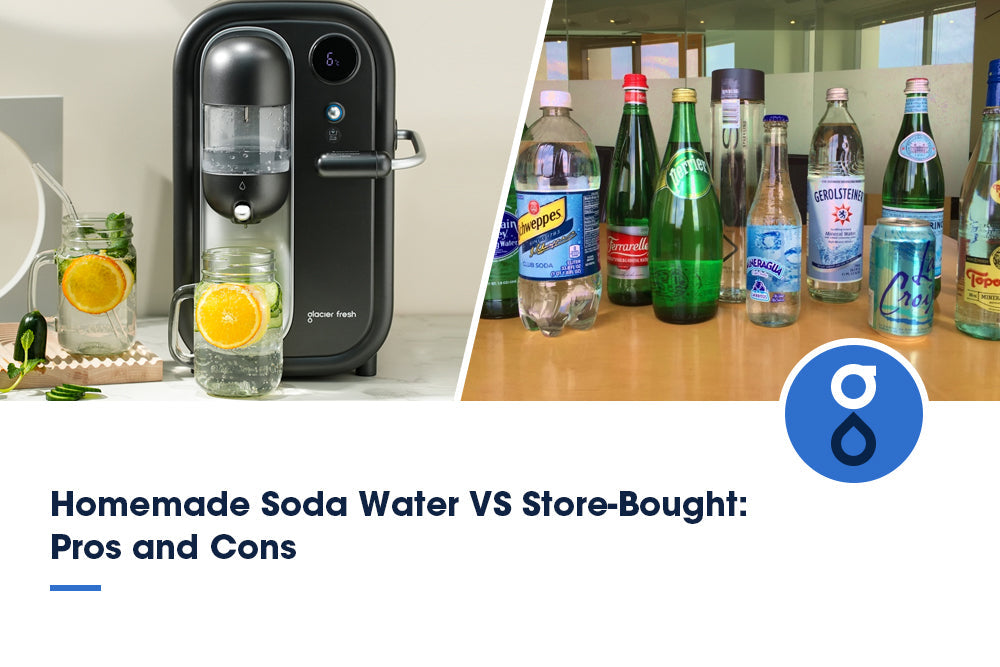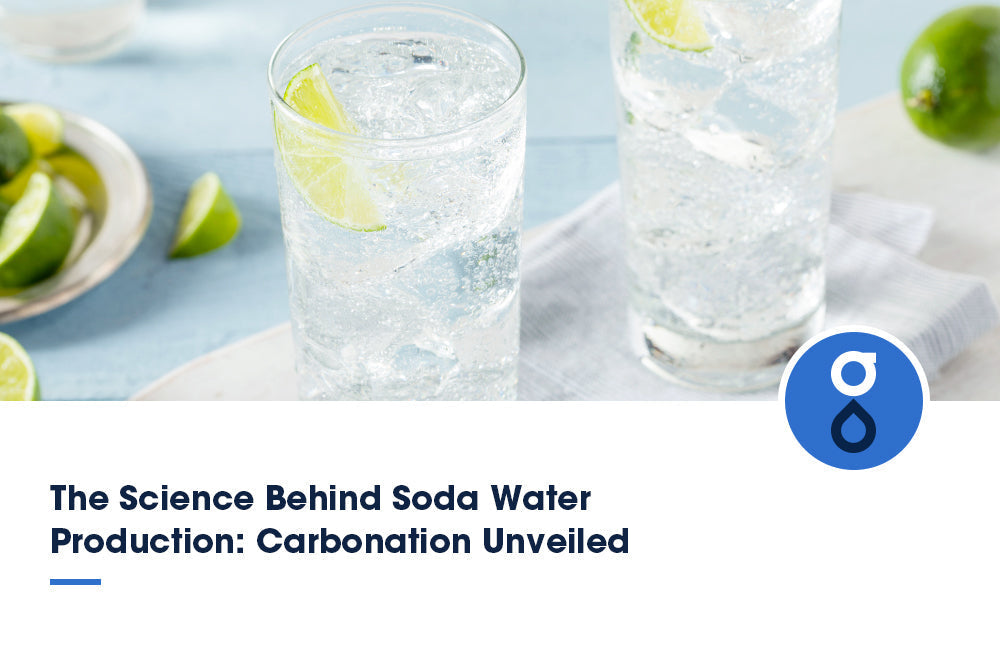Table of Contents:
Discovery and development of PFAS
Industrial applications of PFAS
PFAS in consumer products
Environmental concerns and regulation
Future outlook and alternatives to PFAS
FAQs
Conclusion
You've probably never heard of PFAS, but they're all around you. Short for per- and polyfluoroalkyl substances, PFAS are a group of man-made chemicals that have been widely used in industry and consumer products since the mid-20th century. They're in your non-stick pans, your water-resistant jackets, even your pizza boxes. But what are they exactly? How'd they become so ubiquitous?
And should you be worried about them? In this article, we're going to dive deep into the history of PFAS, explore their uses in various industries and everyday products, and discuss the environmental concerns they pose. We'll also look at what the future holds for these controversial chemicals. So buckle up, it's going to be an enlightening ride!
Discovery and development of PFAS
The discovery and development of PFAS, or per- and polyfluoroalkyl substances, has had a massive impact on the world of consumer products. You might not know it, but you've probably used something containing them today. These chemicals were first synthesized in the mid-20th century, with their unique chemical structure making them highly resistant to heat, water, and oil. Their widespread use in everyday items, from non-stick pans to water repellent clothing, is a testament to their usefulness.
However, the PFAS toxicity began to surface, revealing a darker side to these wonder chemicals. Research showed that they could linger in the environment and in the human body for years, leading to potential health impacts. Long-term exposure to PFAS has been linked to a range of harmful health effects, including cancer, hormone disruption, and immune system impairment. Despite the growing concerns over their safety, these chemicals remain prevalent in many industries, highlighting the challenge of balancing convenience and health risks.
Industrial applications of PFAS
Firefighting Foams

Firefighting foams have been widely utilized in various industrial applications due to their exceptional fire suppression capabilities. These foams are specifically designed to quickly extinguish fires by forming a thick blanket that suppresses the release of flammable vapors, preventing re-ignition. They are commonly used in oil refineries, chemical plants, airports, and military bases to combat high-risk fires involving flammable liquids and hazardous materials.
However, it is important to note that firefighting foams have been a source of concern due to the presence of per- and polyfluoroalkyl substances (PFAS), which are persistent and bioaccumulative chemicals. Efforts are being made to develop alternative foams with reduced or eliminated PFAS content to minimize their environmental impact.
Waterproof Fabrics
You'll love how waterproof fabrics keep you dry and comfortable, allowing raindrops to effortlessly slide off your clothing. These fabrics are commonly used in a variety of industrial applications, including outdoor clothing, tents, and even medical equipment. The key to their waterproofing abilities lies in the use of PFAS, or per- and polyfluoroalkyl substances. PFAS are a group of chemicals that have unique properties, including water and oil repellency.
When applied to fabrics, these chemicals create a barrier that prevents water from penetrating the material. This is achieved by forming a thin film on the fabric's surface, which causes water droplets to bead up and roll off. In addition to their waterproofing capabilities, PFAS-treated fabrics also offer durability and resistance to stains, making them a popular choice in various industries.
Electrical Insulation
Electrical insulation is a crucial component in various sectors, ensuring the safety and efficiency of electrical systems. PFAS, or per- and polyfluoroalkyl substances, have gained recognition for their exceptional insulating properties. These substances are commonly used in the manufacturing of electrical wires, cables, and other components.
PFAS-based insulation provides excellent resistance to heat, chemicals, and electrical currents, making it ideal for use in high-voltage applications. Additionally, PFAS insulation offers remarkable durability, withstanding harsh environmental conditions and maintaining its effectiveness over extended periods.
Non-Stick Coatings
To achieve a flawless cooking experience, you won't be able to resist the allure of non-stick coatings. These coatings, commonly known as Teflon, are widely used in kitchenware to prevent food from sticking to the surface. They are made using perfluorooctanoic acid (PFOA), a type of PFAS. PFOA helps create a smooth and slippery surface, allowing for easy cooking and cleaning.
However, there are concerns about the potential health and environmental impacts of PFOA. Studies have shown that PFOA can accumulate in the body and may have adverse effects on human health. Additionally, the manufacturing and disposal of non-stick coatings can release PFOA into the environment, contaminating air, water, and soil. As a result, there is a growing interest in developing safer alternatives to PFAS-based non-stick coatings.

PFAS in consumer products
PFAS are commonly used in a wide variety of consumer products. These include outdoor apparel, cosmetics, and cookware. Outdoor apparel, such as jackets and hiking boots, often contains PFAS to provide water resistance and keep the wearer dry even in wet conditions. This is achieved by creating a non-porous barrier that prevents water from entering the fabric.
In cosmetics, PFAS are used to create long-lasting and smudge-proof makeup products. They provide a non-stick surface that allows makeup to adhere to the skin for extended periods without smearing or smudging. Cookware, especially non-stick pans, often contain PFAS to prevent food from sticking to the surface. This makes cooking and cleaning easier, but it also poses potential health risks.

Exposure to PFAS has been linked to harmful health effects, including liver damage, immune system dysfunction, and an increased risk of certain cancers. PFAS are persistent in the environment and can accumulate in the body over time. They have been detected in drinking water sources, surface water, and even in the blood of individuals. To address these concerns, regulations and labeling requirements have been imposed on consumer product manufacturers and retailers.
The use of certain PFAS is regulated, and there are efforts to phase out the use of these substances in various products. However, labeling requirements for consumer products containing PFAS remains inconsistent across different regions. It is important for consumers to be aware of the potential health risks associated with PFAS in consumer products and to make informed choices when purchasing these items.
Environmental concerns and regulation
PFAS, or per- and polyfluoroalkyl substances, have become a major environmental concern due to their widespread presence and potential harmful health effects. These man-made chemicals are used in various consumer products, industrial processes, and firefighting foams, making them prevalent in water, air, fish, and soil.
Exposure to PFAS has been linked to adverse health effects, including impacts on the immune system, liver, and kidney, as well as certain types of cancer. These chemicals are also known to bioaccumulate in wildlife and can persist in the environment for a long time, posing risks to ecosystems.
To address these concerns, regulatory action has been taken to limit the presence of PFAS. Some states in the US, such as California and New Jersey, have established enforceable standards or Maximum Contaminant Levels (MCLs) for PFAS in drinking water. Other states have adopted guidance levels or health advisories to inform their residents about potential risks. At the federal level, the EPA has been working on a PFAS Strategic Roadmap and a PFAS Task Force to address these chemicals' effects on human health and the environment. Additionally, the Department of Defense has restricted the sale of firefighting foam containing PFAS, and efforts are being made to develop fluorine-free alternatives.
Overall, the concern for the environmental impact and health risks associated with PFAS has led to regulations aimed at limiting their presence in water sources, consumer products, and industrial processes. These actions are crucial to safeguard human health and protect ecosystems from the harmful effects of these hazardous substances.
Future outlook and alternatives to PFAS

Looking ahead, there's a silver lining on the horizon with the potential of safer alternatives to these harmful chemicals. Companies are researching and developing non-PFAS technologies, with the aim of mitigating the health implications associated with these persistent pollutants. Let's have a look at some of the alternatives that are currently being explored:

These sustainable solutions and technological innovations are promising steps toward a PFAS-free future. However, it's not just about finding alternatives but also about creating regulatory frameworks that promote their adoption. As we move forward, remember that change is a process, not an event.
We might not be there yet, but we're on the right track. Embracing these alternatives and supporting the development of further innovations will be crucial in shaping a safer, more sustainable future. And remember, every small action counts towards a larger collective impact.
FAQs
Are PFAS still widely used in industry and consumer products today?
No, PFAS are no longer widely used in industry and consumer products today. Due to their harmful effects on health and the environment, many countries have implemented regulations and restrictions on their use.
Are there any known alternatives to PFAS that are currently being used in industry and consumer products?
Yes, there are alternatives to PFAS currently being used in industry and consumer products. These alternatives aim to provide similar functionality without the health and environmental risks associated with PFAS.
How do regulatory agencies monitor and regulate the use of PFAS in industry and consumer products?
Regulatory agencies monitor and regulate the use of PFAS in industry and consumer products through various measures. They conduct risk assessments, set limits, enforce compliance, and collaborate with other agencies to ensure the safety of the environment and public health.
Conclusion
You've seen how PFAS evolved from discovery to wide industrial use and integration into consumer products. You're now aware of the environmental concerns they pose and the regulations in place. Looking forward, you should keep an eye out for safer alternatives to PFAS as we strive for a more sustainable future.
















